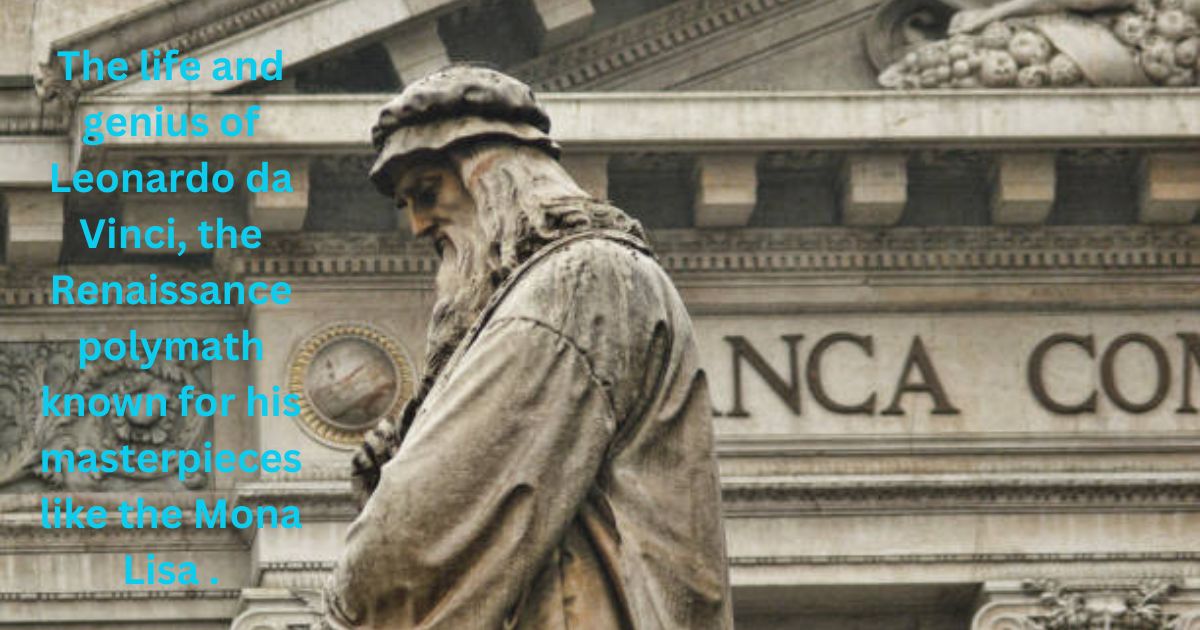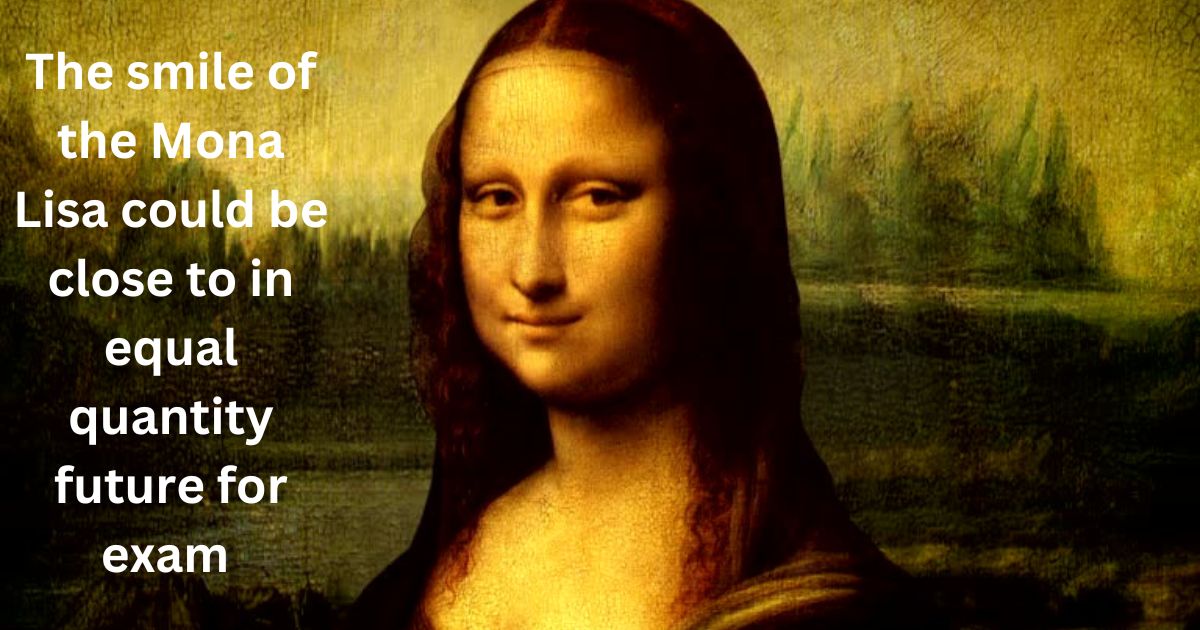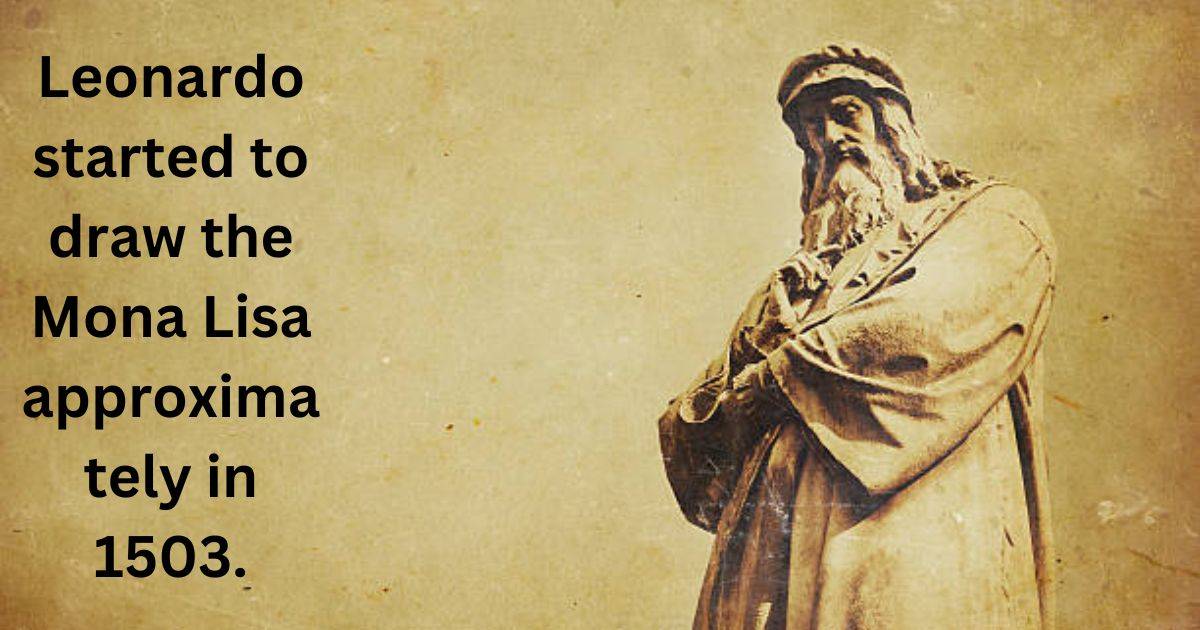Perhaps the best known painting in the world is Leonardo da Vinci’s Mona Lisa. For centuries, its enigmatic and mysterious charm has fascinated millions to this very day as art lovers and researchers try pondering the riddle of what is actually portrays, where it comes from & who created such a brilliant masterpiece.
And the mastermind behind it all is none other than the famously celebrated Italian Renaissance artist Leonardo da Vinci. One would have to step into Leonardo’s life, his findings as an artist, and the socio-cultural setting in Italy during the Italian renaissance period, in order to grasp what the Mona Lisa stood for.
Leonardo da Vinci -A~ The Polymath Genius
Leonardo da Vinci: The Life and Times of a True Visionary 1 Leonardo di ser Piero…Born in the small town of Vinci, near Florence on April 15th, 1452. As an illegitimate son of a local notary and peasant woman, he may have grown up with this somewhat diverse set of life experiences which gave him the opportunity to wander, as it were, through varied fields without having to conform to one profession.
His ability was so broad, and it is impossible to classify him as a painter: his mind could not accept the conceptual control of science or art. Leonardo was in many ways the ultimate Renaissance man: he had an insatiable curiosity about everything around him.
Even as a child, it was evident that da Vinci had an aptitude for the arts and by 14 years old he began studying under Andrea del Verrocchio — one of Florence’s most important figures in painting and sculpture.
It was the place where da Vinci got his first training in an extensive range of pursuits — he would study painting, to be sure, but also metalworking and other arts – but his blending of innovation with a fierce curiosity shortly distinguished him from other pupils.

Note, though, that Leonardo viewed art scientifically. He thought that to accurately represent the natural world, one had to study it assiduously.
It was this red thread of the scientific perspective that defined his various works, most famously in Mona Lisa where da Vinci expressed genuine intrigue with anatomy and how light falls on shadowed recesses and human visages resulting into one of the greatest masterpieces.
The Creation of the Mona Lisa
Leonardo started to draw the Mona Lisa approximately in 1503 and is thought to have continued working on it for around four years, then perhaps “keeping” it until about 1517. Produced while in Florence, a period of both artistic and scientific endeavor for Leonardo.
Mona Lisa, also known as Mona Lisa and wife of Florentine merchant Francesco del Giocondo Although widely regarded as such, that identification is a matter of dispute among scholars who have long wondered whether Gwen John was the full-length portrait’s subject.
In any case, the other name of the picture — La Gioconda comes from her sonorous family surname and binds this greatest painter-blackmailer to a prosperous merchant clan.
One of the reasons why the Mona Lisa is considered such a masterpiece, and you can also recognize Leonardo da Vinci´s art forger through his work to let him be known as a great artist was that he painted with sfumato. what does this mean?
This helps to build depth so that little light-shadow transitions are almost invisible. The result is an exceptional level of realism as can be seen primarily in the rendering of the face and hands belonging to the sitter.
The Mona Lisa Smirk: Her enigmatic smile, often referred to as the secret grin is due mostly to the subtle sfumato application creating her face look mysterious. The Mona Lisa can be perceived as either smiling or looking contemplative depending on how the viewer first sees it and their mood at that moment, which adds to its mystery.
The kind of detail-oriented thinking that is usually exclusive to Leonardo can also be seen in the back. Made even more in the ether by its faraway, dream-like landscape of winding paths and bridges behind him that counterpose against the sitter’s quiet stillness.

The landscape is shown in an aerial perspective, where they push the colors away and water down the details to give it that huge feel. It was unheard of in his day and provided evidence to how much Leonardo understood about optics as well the world around him.
The Enigmatic Smile
The smile of the Mona Lisa could be close to in equal quantity future for exam and examine than almost one another superb humorous personal.orm It is this expression that turns the painting into a psychological enigma.
At a casual glance, the subject’s face resembles an affectionate grin; however if one were to focus more closely, its easy depiction becomes harder and vaguer. And that optical illusion is only possible due to years of experience studying the human form, a lifetime spent drawing faces and bodies… plus his use of light.
Leonardo based his understanding of emotion on the mechanics of expressing them, as well how these subtle movements were achieved by a human face. In working from the dissected form to painting, he learned how muscles connect and fit under the skin.
So it follows that the Mona Lisa’s smile is no mere bit of artistry but has an empirical foundation: a concerted effort to capture something elusive yet all too real, human expression — or at least one person smiling slyly just enough so we know she knows what we think.
Art historians and psychologists have given a number of interpretations to the smile Certain art historians have postulated that an enigmatic smile was used purposely as a representation of the emotion innate to the sitter or possibly even dismissed, subjective beauty and expression.
Some others say the smile encapsulates renaissance values of consonance and equilibrium, that it represents a joining together of nature with reason.
Cultural & Historical Influence
It is a portrait of the individual Mona Lisa, but its effects are far reaching beyond her casual intent. When Leonardo moved to France, where he lived until his death in 1519, the painting entered the collection of French royalty before being taken to its current resting place at Paris’s Louvre Museum.
It took a few centuries for it to rise to fame and become the truly global icon that we know of in modern times, which really only happened in 20th century.
A pivotal historical moment adding to the painting’s famousness was Mona Lisa being stolen in 1911. In 1911, it was taken by a worker at the Louvre named Vincenzo Peruggia who believed that is where it belonged. The painting was lost for two years as its disappearance led to worldwide speculation, with several news stories being published on it.
In 1913, when the Mona Lisa was finally found, its theft had made it an international sensation and a poster child for artistic genius as well as cultural patrimony.
The Mona Lisa,and more specifically the nature of her smile, has been the topic for many copies and parodies in popular culture.
The painting, one of DaVinci’s most famous works (along with the Mona Lisa and Last Supper), has appeared almost everywhere since first inspired by prints in from Marcel Duchamp no small thank you to his mustache as well; pop-art renditions by Andy Warhol et al.; it transcended portraiture into a symbol of fine art poster-child entertainment.
It is priceless and worth more than anything else in the world, culturally as well as monetarily — one of a few most prestigious works on Earth.
Leonardo and the Timeless Urge to See Mona Lisa
Leonardo da Vinci is considered a genius not only because of his technical painting skills but also in the amazing way he managed to put together art and science, emotions with intellects molding pieces that can still cause excitement until nowadays.
The Mona Lisa is the crowning achievement of that trend. Utilizing techniques such as sfumato, his knowledge of human anatomy, and utilizing studies in nature himself Leonardo captured a painting that spoke throughout time to tell the true tale.
The Mona Lisa represents in its essence, a paradox of existential mystery always moving beyond truth. This is perhaps why the painting speaks to so many, no matter the age group or demographics.
Yes, it is a portrait of a woman but more than that the Mona Lisa by Leonardo da Vinci prompts both tears and smiles as we imagine her life like no other painting ever has or probably will so retain our title for being the most iconic artwork in history.
The life and genius of Leonardo da Vinci, the Renaissance polymath known for his masterpieces like the Mona Lisa and The Last Supper, as well as his groundbreaking contributions to science, anatomy, and engineering.

